Vietnam Travel Guide
Vietnam Travel Guide – prepare your trip to Vietnam with our practical guide: where to go, what to do, food, rooftops, how to get around, safety and more.
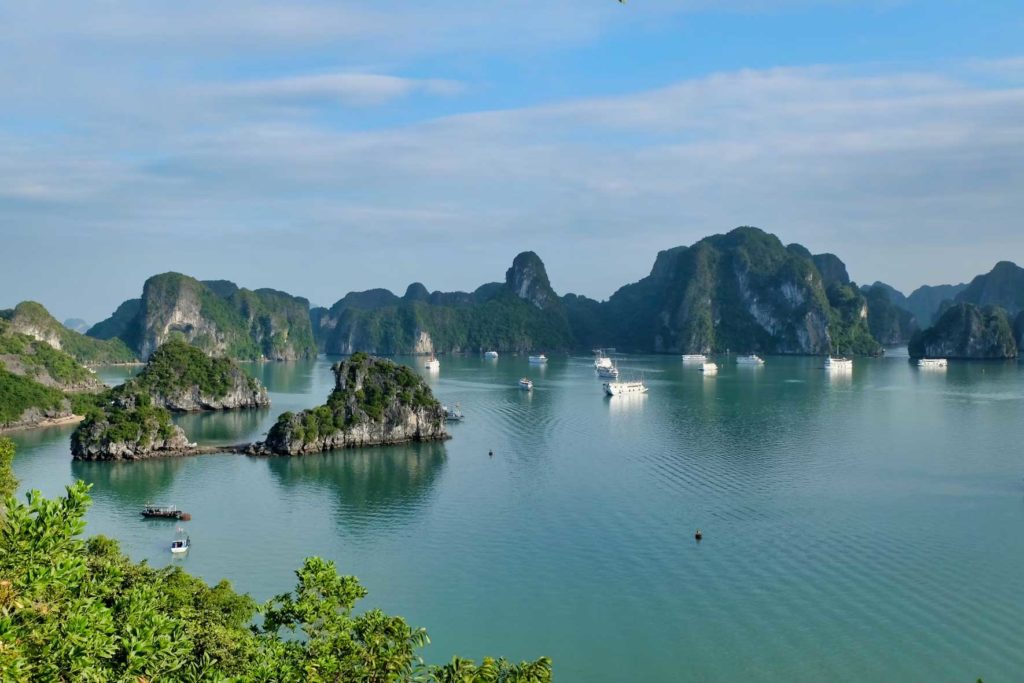
Vietnam is a Southeast Asian country with a rich history, diverse culture, and breathtaking natural beauty. Known for its delicious cuisine, bustling cities, and stunning landscapes, Vietnam is a popular tourist destination for travelers of all interests. With a population of over 97 million people, Vietnam is a vibrant and dynamic country that is full of surprises.
Travel to Vietnam
One of the most popular destinations in Vietnam is the city of Hanoi, the capital of the country. Located in the north, Hanoi is a city that blends modernity with tradition. Here, you can explore the ancient Old Quarter, which is home to narrow streets lined with old buildings and shops selling traditional Vietnamese goods. You can also visit the Ho Chi Minh Mausoleum, which houses the embalmed body of the country’s former leader, and the Temple of Literature, which is dedicated to Confucius and Vietnam’s first university.
Another must-see destination in Vietnam is Halong Bay, a UNESCO World Heritage Site known for its spectacular limestone cliffs and crystal-clear waters. Visitors can take a boat tour of the bay and admire the stunning scenery while enjoying fresh seafood and learning about the history and culture of the region. Other popular attractions in Vietnam include the ancient city of Hoi An, the scenic Mekong Delta, and the bustling Ho Chi Minh City, also known as Saigon. With so much to see and do, Vietnam is a destination that will captivate and inspire you.
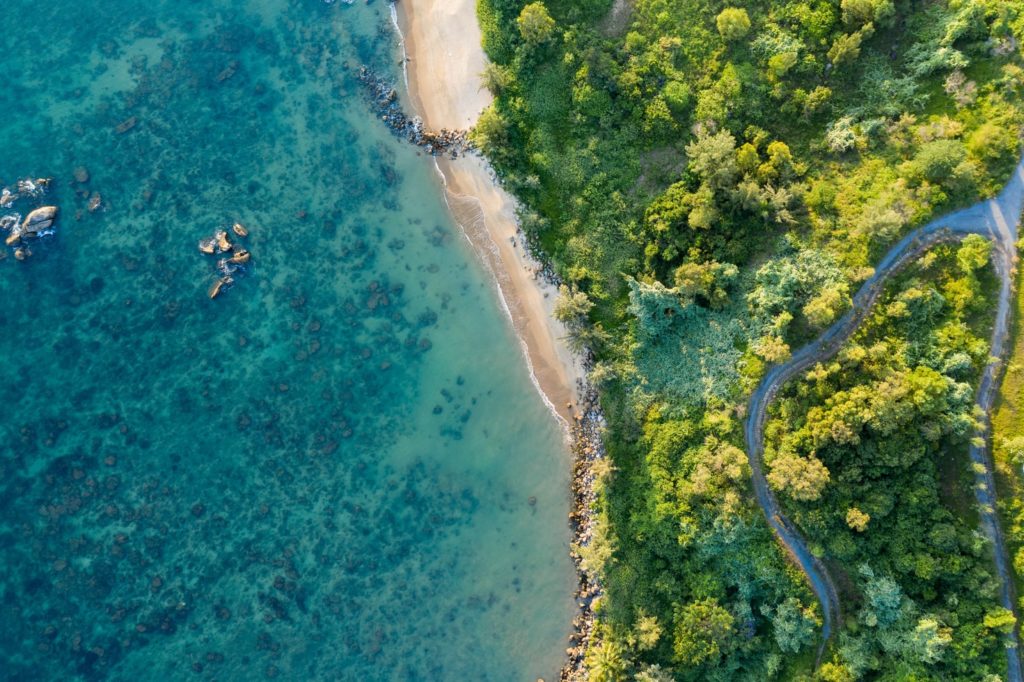
Best time to go to Vietnam – the 4 seasons in Vietnam
The best time to visit Vietnam depends on the region you plan to visit and the activities you have in mind. Generally, the most popular time to travel to Vietnam is from December to March when the weather is dry and cool in the north, and warm and sunny in the south.
Vietnam has four distinct seasons, which vary depending on the region:
Spring (February – April): Spring is a great time to visit the north of Vietnam when the weather is mild, and the countryside is covered in a blanket of flowers. It’s also a good time to visit central Vietnam when the temperatures are cooler and rainfall is lower.
Summer (May – August): Summer is the hottest and wettest time of the year in Vietnam. The beaches and islands of the central coast are at their best during this time, while the northern mountainous areas are perfect for trekking.
Autumn (September – November): Autumn is an ideal time to visit Vietnam, especially the north, when the weather is mild and the rice paddies are turning golden. It’s also a great time to visit the central coast and explore the ancient city of Hoi An.
Winter (December – January): Winter is a good time to visit Vietnam’s southern regions, including Ho Chi Minh City and the Mekong Delta, as the temperatures are cooler and the rainfall is lower. It’s also a great time to trek in the northern mountains and visit the markets of Sapa.
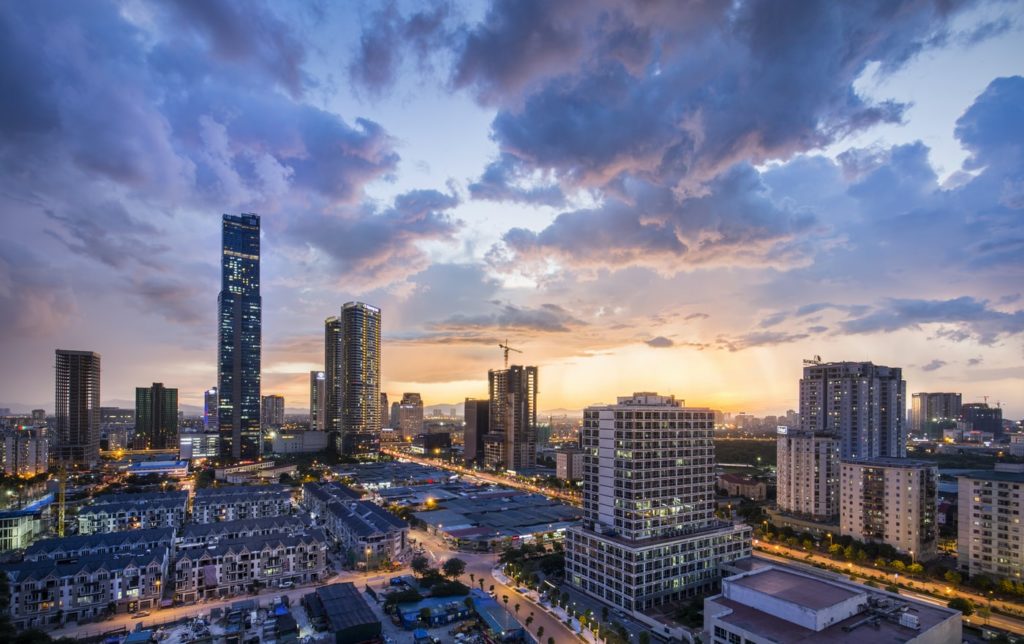
Visa & Entry requirements
Most foreign nationals, including Americans and Europeans, need a visa to enter Vietnam. There are a few exceptions, such as citizens of ASEAN countries, who are allowed to enter Vietnam for a limited time without a visa. However, most travelers will need to obtain a visa before arriving in Vietnam.
There are several types of visas available for travelers to Vietnam, including single-entry visas, multiple-entry visas, and e-visas. The requirements and application process can vary depending on your nationality and the type of visa you need.
For example, American citizens can apply for a 1-year multiple-entry visa, a 3-month single-entry visa, or an e-visa. European citizens, depending on the country of origin, may also be eligible for e-visas or multiple-entry visas.
It’s recommended to check with the Vietnamese embassy or consulate in your home country or a reputable visa agency to determine the specific requirements and application process for your nationality. It’s also important to ensure that your passport is valid for at least six months beyond your planned stay in Vietnam.
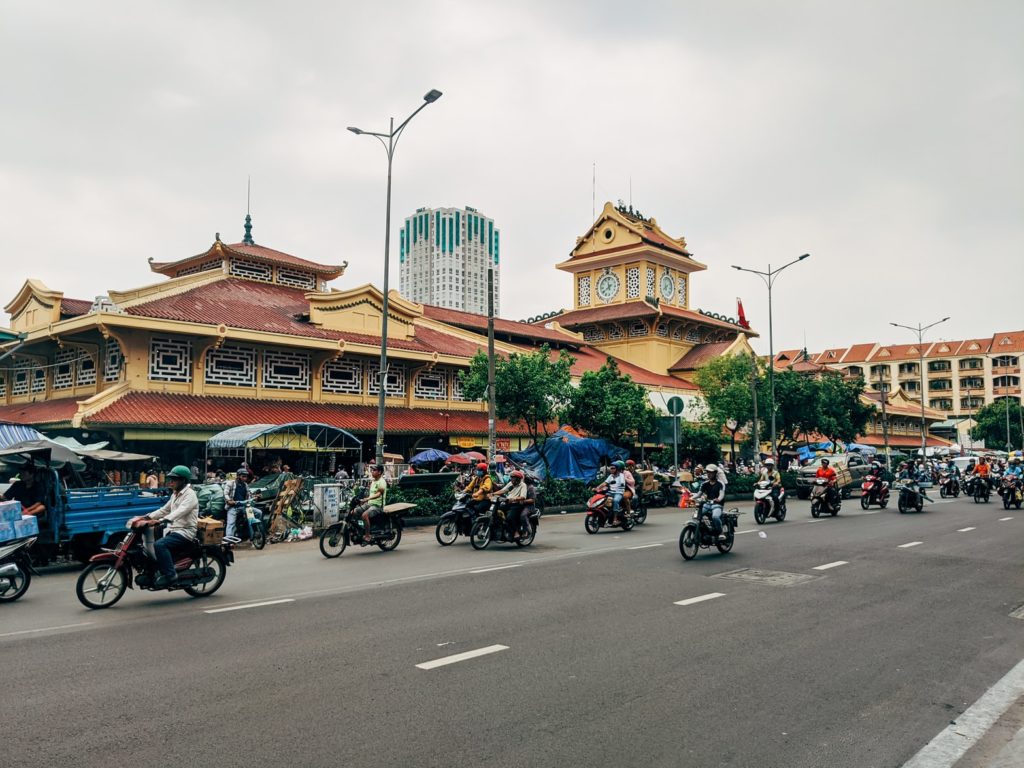
How to get around Vietnam
Vietnam has a variety of transportation options for getting around the country, including:
Domestic Flights: Vietnam has several domestic airlines that operate flights between major cities, including Vietnam Airlines, Jetstar Pacific, and Bamboo Airways. This is the fastest way to travel long distances in Vietnam.
Trains: Vietnam’s train system is extensive, with routes connecting major cities such as Hanoi, Hue, Da Nang, Nha Trang, and Ho Chi Minh City. Train travel in Vietnam is generally safe and comfortable, with a range of classes available.
Buses: Buses are a popular and affordable way to travel in Vietnam, with a wide range of options from local minibusses to comfortable tourist buses. Many tourist destinations are well connected by bus, but be prepared for long journeys and bumpy roads in some areas.
Motorbikes and Scooters: Renting a motorbike or scooter is a popular way to explore Vietnam, especially in rural areas or on coastal roads. However, it’s important to be aware of the risks and follow local traffic rules and regulations.
Taxis: Taxis are widely available in cities and larger towns, but be sure to use a reputable company and negotiate the fare before starting your journey.
Cyclos and Motorbike Taxis: Cyclos, also known as bicycle rickshaws, and motorbike taxis are popular modes of transport for short trips in cities and towns. Be sure to agree on a price before starting your journey, and be aware that these options may not be the safest or most comfortable.
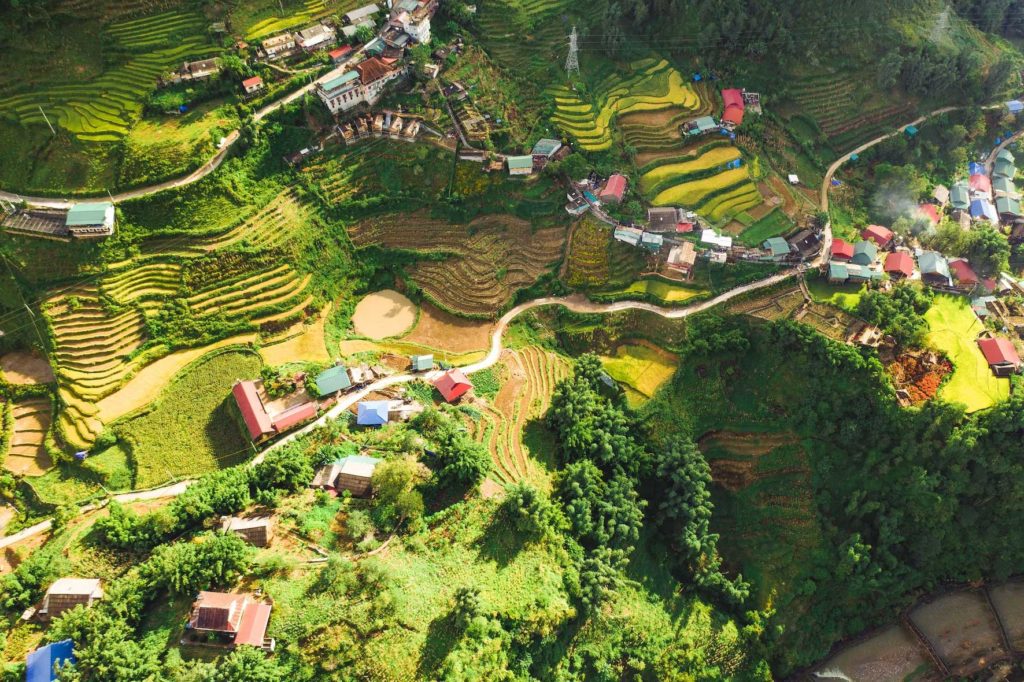
Explore the regions in Vietnam
Northern Vietnam
Northern Vietnam is home to the capital city of Hanoi, which is known for its French colonial architecture, delicious food, and vibrant culture. Other points of interest in the region include:
Halong Bay: A UNESCO World Heritage Site famous for its stunning limestone cliffs and emerald waters.
Sapa: A mountain town known for its scenic rice terraces and ethnic minority communities.
Ninh Binh: An area known for its beautiful natural landscapes, including the Tam Coc and Trang An caves.
Ha Giang: A remote area in the far north of Vietnam that is home to some of the country’s most stunning mountain scenery.
Central Vietnam
Central Vietnam is a region of contrasts, with a mix of historic cities, beautiful beaches, and rugged mountain landscapes. Some points of interest in the region include:
Hue: A former imperial city with a rich history and cultural heritage, including the UNESCO World Heritage Site of the Citadel and the Tombs of the Emperors.
Hoi An: A charming town known for its well-preserved historic buildings, lantern-lined streets, and colorful markets.
Danang: A coastal city with beautiful beaches and modern amenities, including the famous Marble Mountains.
Phong Nha-Ke Bang National Park: A UNESCO World Heritage Site and one of the world’s largest karst landscapes, home to incredible cave systems.
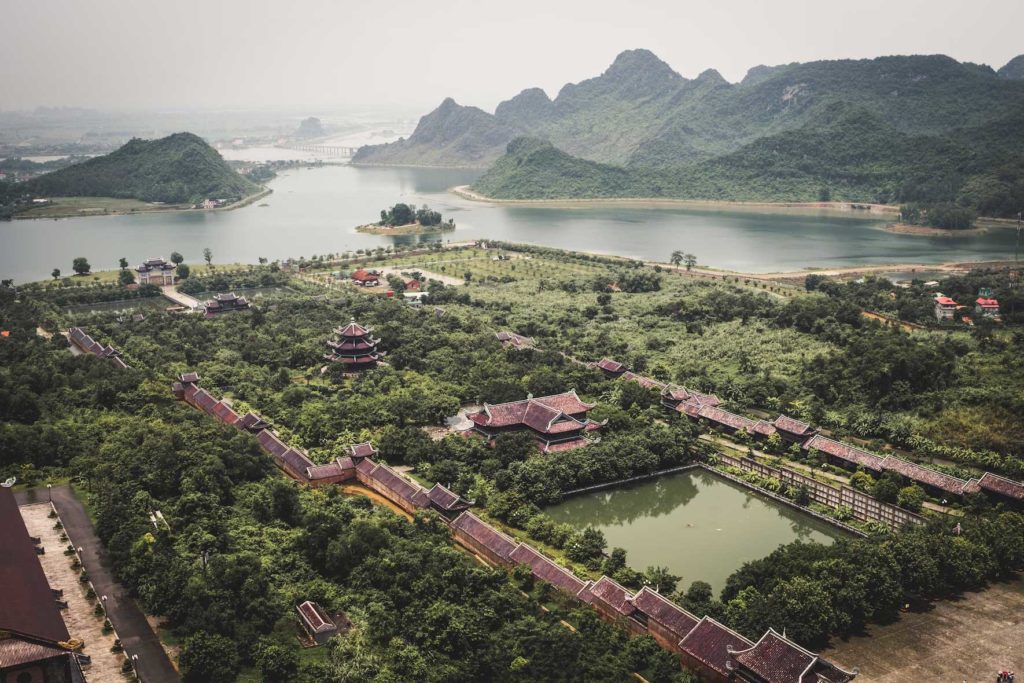
Southern Vietnam
Southern Vietnam is a dynamic and bustling region with a mix of modern cities, rural villages, and beautiful natural landscapes. Some points of interest in the region include:
Ho Chi Minh City: The largest city in Vietnam, known for its French colonial architecture, vibrant markets, and delicious street food.
Mekong Delta: A network of waterways and fertile farmland that is known as the “rice bowl” of Vietnam, with floating markets and traditional villages.
Phu Quoc: A tropical island known for its beautiful beaches and clear waters, with opportunities for snorkeling, diving, and other water sports.
Dalat: A mountain town known for its cool climate and stunning natural scenery, including waterfalls, lakes, and pine forests.
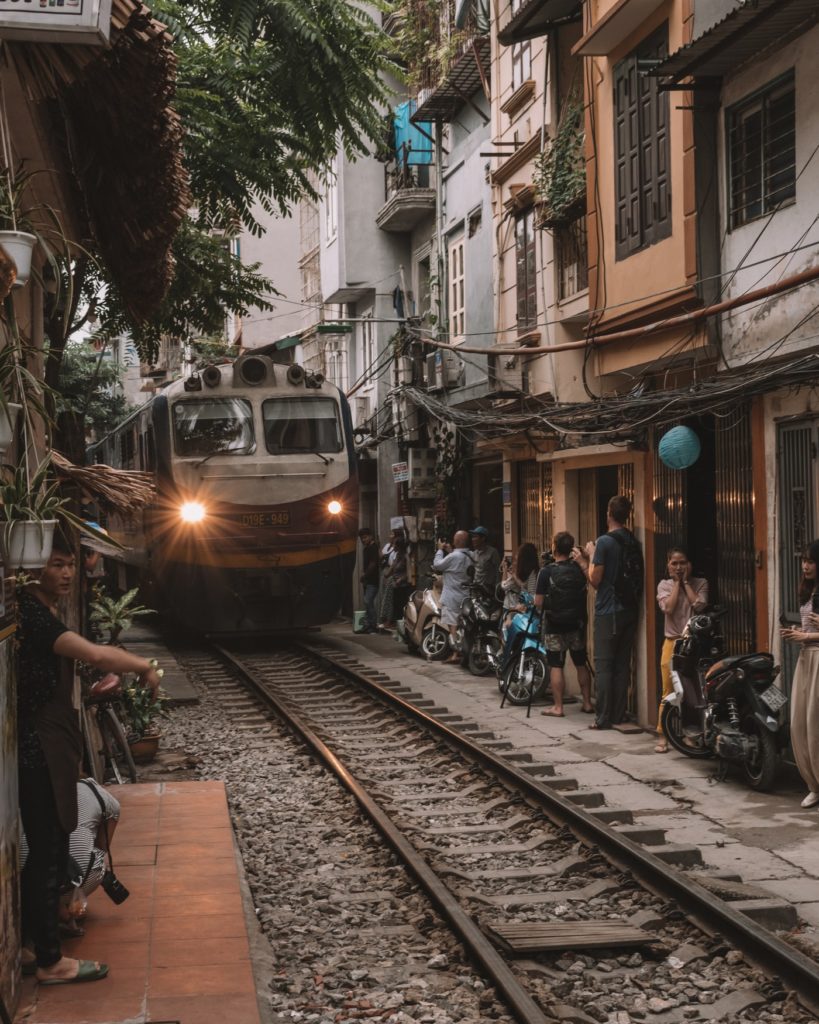
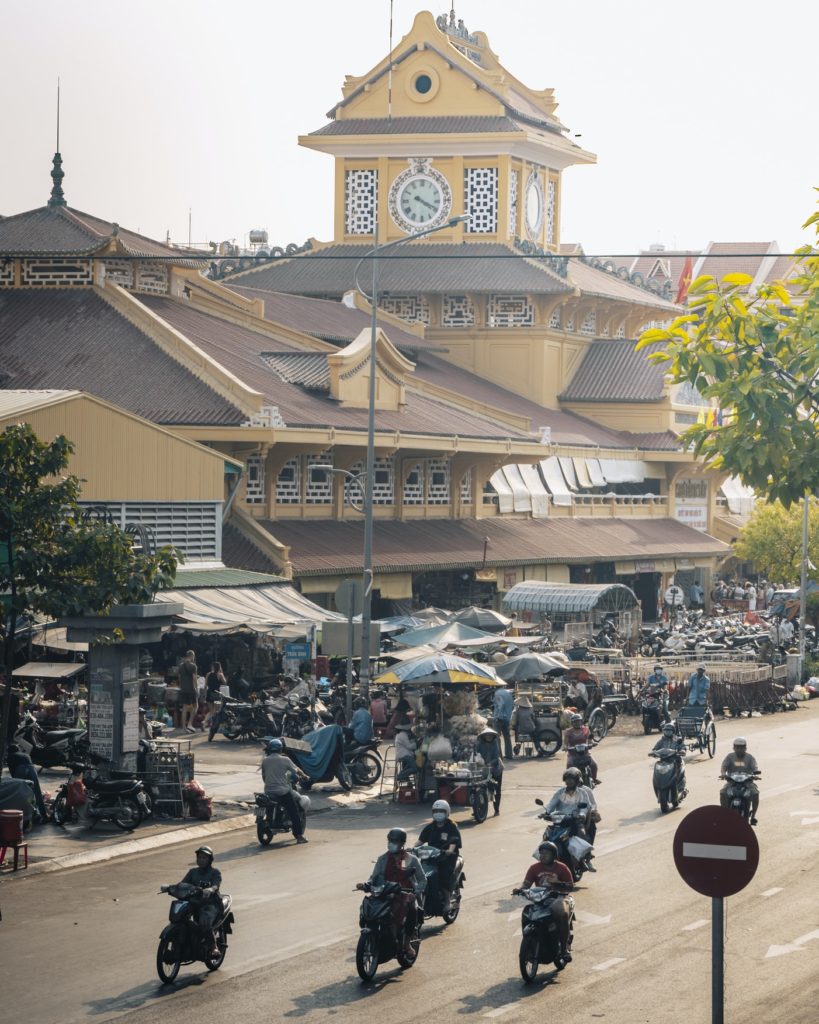
Halong Bay
Halong Bay is a world-famous natural wonder located in the Gulf of Tonkin in northern Vietnam. The bay is known for its stunning limestone cliffs, emerald waters, and unique rock formations, which have made it a popular destination for visitors from all over the world. Some of the bay’s main landmarks and fun things to do include:
The best way to experience Halong Bay is on a cruise, which allows visitors to explore the bay’s many islands, caves, and beaches. Visitors can choose from a range of cruises, from budget-friendly options to luxury vessels with all-inclusive amenities.
Halong Bay is home to a number of caves, each with its own unique features and history. Some of the most popular caves to visit include the Thien Cung Cave, the Sung Sot Cave, and the Dau Go Cave.
Halong Bay is home to more than 1,600 islands and islets, each with its own unique features and attractions. Visitors can explore the islands by kayak or by taking a small boat, and admire the stunning natural beauty of the area.
Halong Bay is known for its delicious seafood, with a range of restaurants and street food vendors serving up fresh and flavorful dishes. Visitors can try local specialties such as grilled squid, prawns, and clams, as well as a range of Vietnamese and international cuisine.
One of the most beautiful things to do in Halong Bay is to watch the sunset over the water. Visitors can enjoy the peaceful and tranquil atmosphere of the bay as the sun sets over the limestone cliffs and emerald waters.
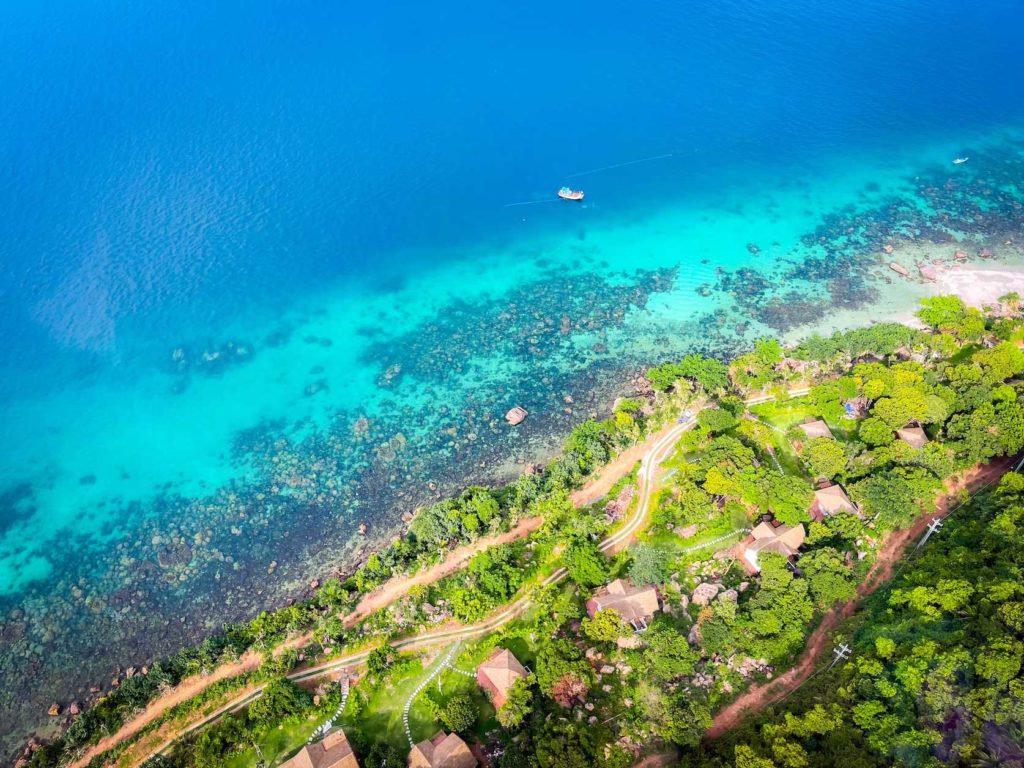
Explore the main cities in Vietnam
Hanoi
Hanoi is the capital city of Vietnam, known for its historic landmarks, vibrant culture, and delicious food. Some of the city’s main landmarks include:
Hoan Kiem Lake: A scenic lake in the heart of the city, home to the Ngoc Son Temple and a popular spot for locals to exercise and relax.
Ho Chi Minh Mausoleum: A grand monument dedicated to Vietnam’s former leader, Ho Chi Minh.
Temple of Literature: A historic temple and former university that is dedicated to Confucius and Vietnam’s scholars.
In addition to these landmarks, Hanoi is also known for its street food, including the famous dish of pho (noodle soup), as well as its traditional water puppet shows and bustling markets.
Ho Chi Minh City
Ho Chi Minh City, also known as Saigon, is the largest city in Vietnam and a hub of culture, commerce, and tourism. Some of the city’s main landmarks include:
Ben Thanh Market: A bustling indoor market that is a popular spot for shopping and trying local street food.
Independence Palace: A grand palace that was formerly the home of the president of South Vietnam during the Vietnam War.
War Remnants Museum: A museum dedicated to the Vietnam War and its impact on the country and its people.
In addition to these landmarks, Ho Chi Minh City is also known for its street food, nightlife, and shopping, with modern malls and trendy boutiques alongside traditional markets and street vendors.

Da Nang
Da Nang is a coastal city in central Vietnam that is known for its beautiful beaches, stunning natural landscapes, and rich cultural heritage. Some of the city’s main landmarks and fun things to do include:
My Khe Beach is a long stretch of white sand that is known for its clear blue waters and excellent surf. Visitors can swim, sunbathe, and enjoy water sports such as surfing, kayaking, and parasailing.
The Marble Mountains are a group of five limestone and marble hills located just south of Da Nang. Visitors can climb to the top of the hills and explore the caves, temples, and pagodas that are nestled among the rocks.
The Son Tra Peninsula is a scenic area that is home to a nature reserve and a number of beaches, as well as the famous Lady Buddha statue. Visitors can hike through the forested hills and enjoy panoramic views of the coast.
Da Nang Cathedral is a historic Catholic church that was built by French missionaries in the early 20th century. Visitors can admire the beautiful Gothic architecture and attend Mass in the tranquil atmosphere of the church.
Da Nang is known for its delicious local cuisine, which includes a range of traditional dishes such as banh mi (Vietnamese sandwich), mi quang (turmeric-flavored noodles), and bun cha ca (fish cake noodle soup). Visitors can also try local specialties such as banh xeo (sizzling pancakes) and goi cuon (fresh spring rolls).
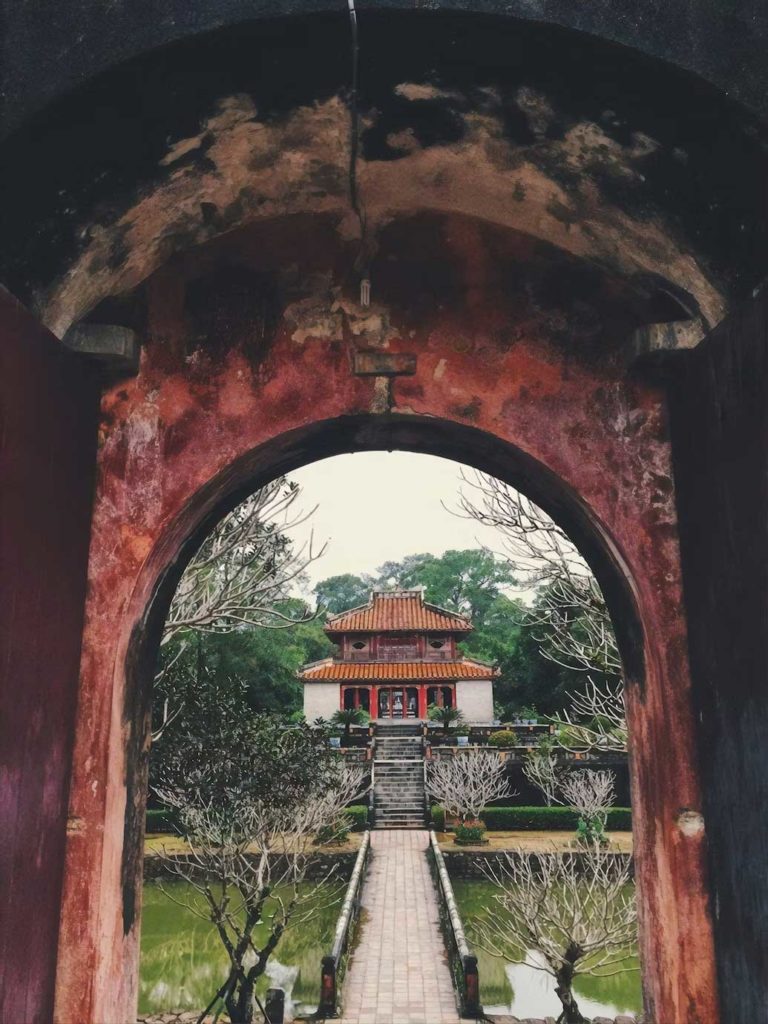
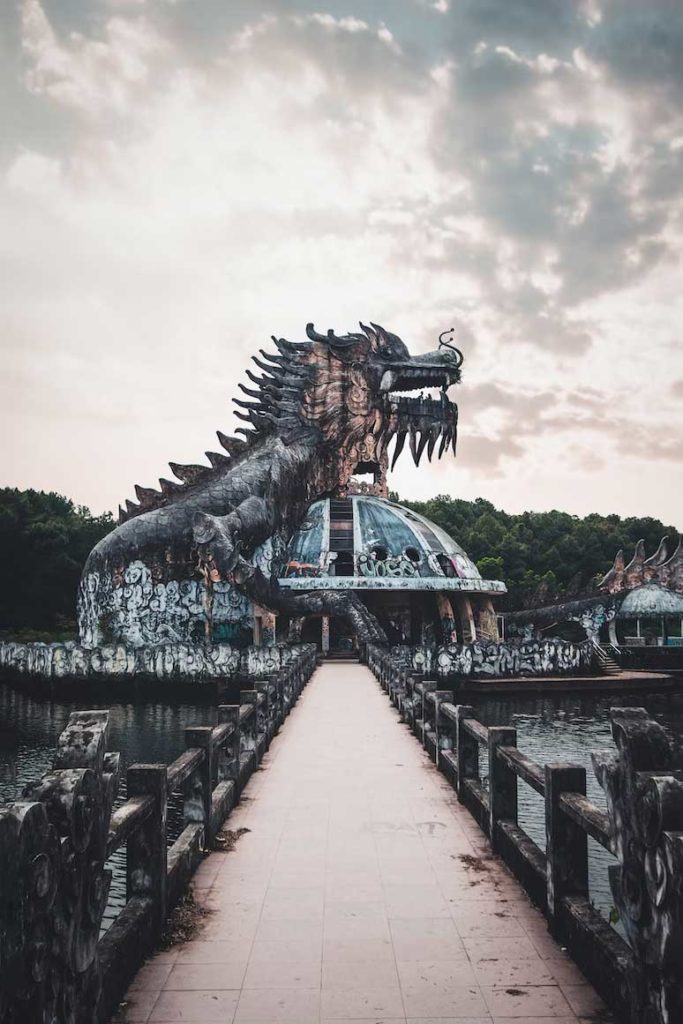
Hue
Hue is a historic city in central Vietnam that was once the capital of the Nguyen Dynasty. Some of the city’s main landmarks include:
Citadel and Imperial City: A UNESCO World Heritage Site that was the seat of power for the Nguyen Dynasty.
Tombs of the Emperors: A series of elaborate tombs that are the final resting place of the Nguyen emperors.
Thien Mu Pagoda: A historic pagoda that is a symbol of Hue and an important religious site.

Hai Phong
Hai Phong is a port city in northern Vietnam that is often overlooked by tourists, but has plenty to offer for those who venture off the beaten path. Some of the city’s main landmarks and fun things to do include:
Cat Ba Island is a popular destination for visitors to Hai Phong, known for its beautiful beaches, hiking trails, and limestone cliffs. Visitors can take a boat from Hai Phong to Cat Ba Island and spend a day or more exploring the island’s natural beauty.
Du Hang Pagoda is a historic temple located in the heart of Hai Phong, known for its beautiful architecture and peaceful atmosphere. Visitors can admire the ornate decorations and statues, and learn about the temple’s history and significance.
The Hai Phong Opera House is a beautiful French colonial-era building that was restored in the 1990s. Visitors can admire the ornate architecture and catch a performance or concert in the evening.
Lach Tray Stadium is a popular venue for sports fans in Hai Phong, with a capacity of over 30,000 spectators. Visitors can catch a football match or other sporting event, and soak up the local atmosphere.
Hai Phong is known for its delicious seafood and local cuisine, with a range of street food vendors and restaurants serving up fresh and flavorful dishes. Visitors can try local specialties such as banh da cua (crab noodle soup) and nem cua be (crab spring rolls), or sample seafood dishes such as grilled squid and shrimp.

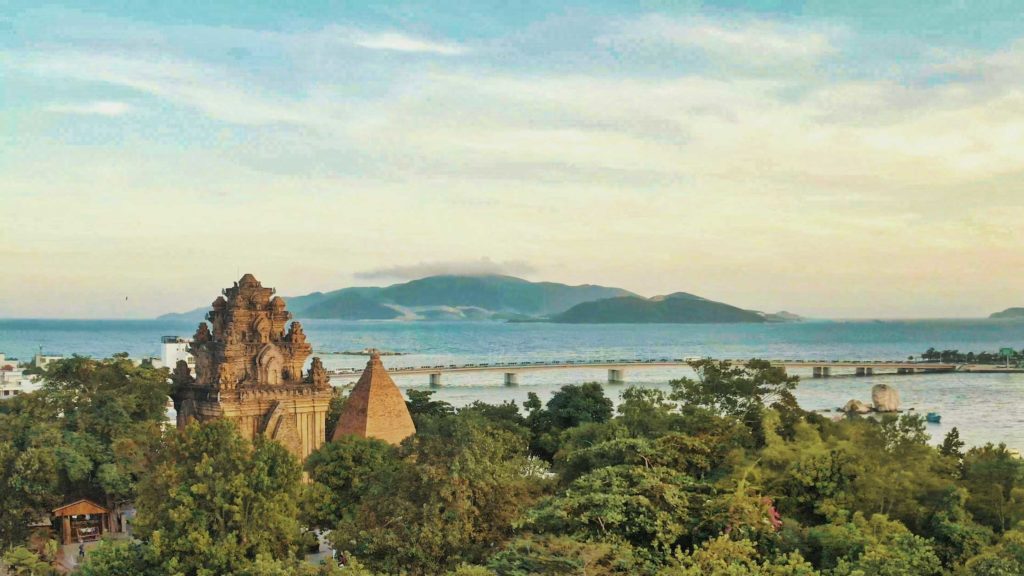
Nha Trang
Nha Trang is a coastal city in central Vietnam that is known for its beautiful beaches, clear waters, and lively nightlife. Some of the city’s main landmarks and fun things to do include:
Nha Trang Beach is the main attraction in the city, with a long stretch of white sand and clear blue waters. Visitors can swim, sunbathe, and enjoy water sports such as kayaking, jet-skiing, and parasailing.
The Po Nagar Cham Towers are a group of ancient temple towers located on a hill overlooking the city. Built by the Cham people between the 7th and 12th centuries, these towers are an important part of Vietnam’s cultural heritage and are well worth a visit.
The Long Son Pagoda is a historic Buddhist temple located in the center of Nha Trang, known for its giant white Buddha statue and intricate decorations. Visitors can explore the temple complex, admire the architecture, and learn about Buddhist culture and beliefs.
Vinpearl Amusement Park is a popular family-friendly attraction in Nha Trang, located on an island just off the coast. The park features a range of rides and attractions, including a water park, a cable car, and an aquarium.
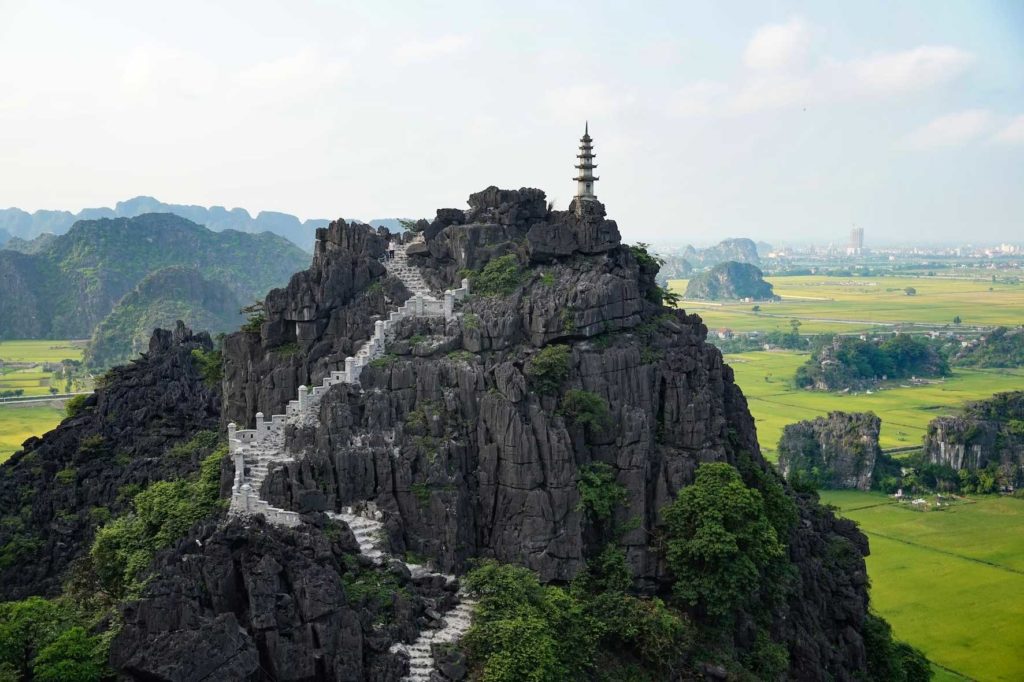
Sa Pa
Sa Pa is a mountainous town located in the northwest of Vietnam, near the border with China. It is known for its stunning natural scenery, ethnic minority communities, and unique cultural heritage. Some of the town’s main landmarks and fun things to do include:
Fansipan Mountain is the highest peak in Vietnam, with an altitude of 3,143 meters. Visitors can take a cable car to the summit and enjoy panoramic views of the surrounding mountains and valleys.
Sa Pa Market is a bustling market where visitors can find a range of local handicrafts, textiles, and traditional foods. The market is also a great place to interact with ethnic minority communities and learn about their way of life.
Cat Cat Village is a traditional H’mong village located just a short distance from Sa Pa. Visitors can take a leisurely hike through the rice terraces and forested hills, and learn about the H’mong culture and way of life.
Muong Hoa Valley is a scenic valley that is home to a number of ethnic minority villages, as well as some of the region’s most stunning rice terraces. Visitors can take a trek through the valley and admire the natural beauty of the landscape.
Sa Pa is known for its delicious local cuisine, which includes a range of traditional dishes such as thang co (a soup made with horse meat), xoi (sticky rice), and grilled trout. Visitors can also try local teas and wines, which are made from locally-grown herbs and fruits.
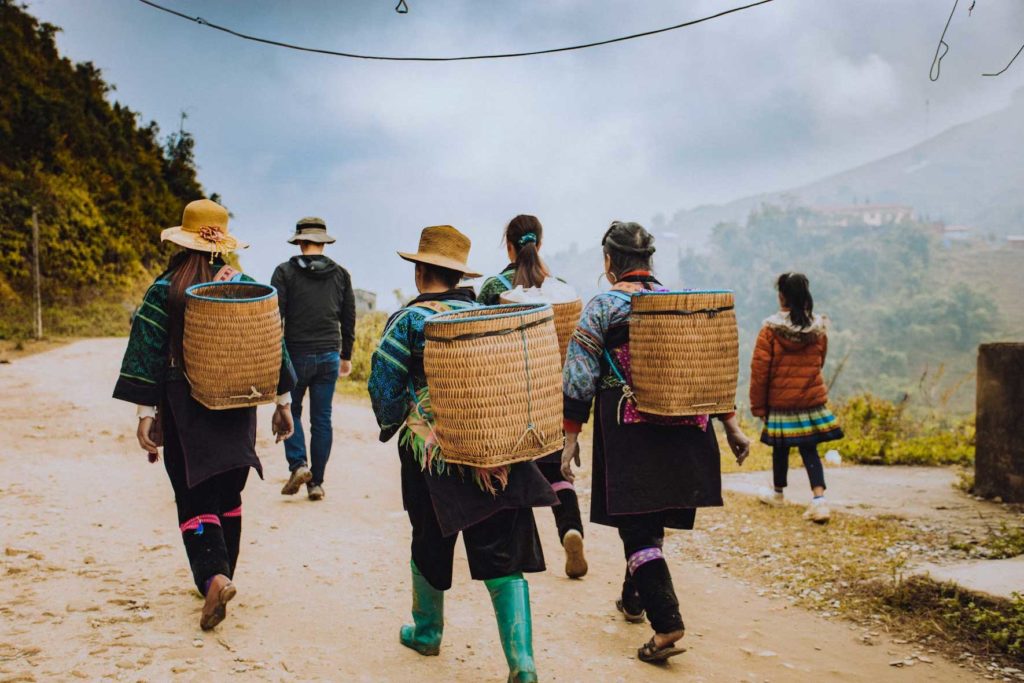

Ninh Binh
Ninh Binh is a province in northern Vietnam that is known for its stunning natural landscapes, ancient temples, and unique cultural heritage. Some of the province’s main landmarks and fun things to do include:
The Trang An Scenic Landscape Complex is a UNESCO World Heritage Site that is known for its stunning karst formations, winding rivers, and lush forests. Visitors can take a boat tour through the complex and admire the natural beauty of the area.
Bai Dinh Pagoda is a large Buddhist temple complex located in the hills of Ninh Binh. The complex features several temples, pagodas, and statues, and is one of the largest temple complexes in Southeast Asia.
Tam Coc is a scenic area known for its rice paddies, winding rivers, and towering limestone cliffs. Visitors can take a boat tour through the area and enjoy the stunning natural beauty of the landscape.
Hoa Lu was the capital of Vietnam during the Dinh and Le dynasties, and is now a UNESCO World Heritage Site. Visitors can explore the ancient temples and pagodas, and learn about the history and culture of the region.
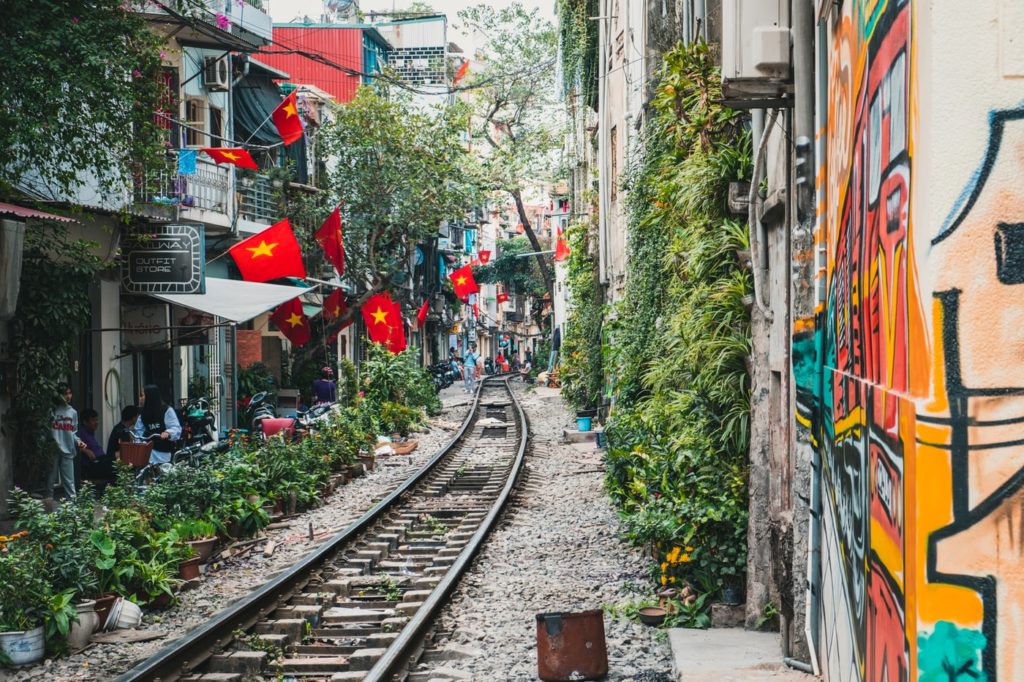
The culture and way of life in Vietnam
Vietnam is a country with a rich cultural heritage and a unique way of life that is shaped by its history, geography, and diverse ethnic groups. Some of the key features of Vietnamese culture and way of life include:
Family and Community:
In Vietnamese culture, family and community are highly valued, and people often prioritize the needs of their family and community over their individual desires. Extended families often live together and work together, and there is a strong sense of loyalty and respect for one’s elders and ancestors.
Food and Drink:
Vietnamese cuisine is known for its fresh and flavorful ingredients, including herbs, vegetables, and seafood. Rice is a staple of the Vietnamese diet, and is often served with a range of meats, vegetables, and sauces. Vietnamese people also enjoy a range of beverages, including tea, coffee, and beer.
Festivals and Holidays:
Vietnam is home to a range of festivals and holidays that are celebrated throughout the year. These include the Tet holiday, which marks the beginning of the lunar new year and is the most important holiday in Vietnam, as well as the Mid-Autumn Festival, the Hung Kings Temple Festival, and the Hue Festival.
Religion and Beliefs:
Vietnam is home to a range of religions and belief systems, including Buddhism, Taoism, Confucianism, and Catholicism. These religions and beliefs have had a profound impact on Vietnamese culture and way of life, and are reflected in art, literature, and everyday customs and practices.
Arts and Culture:
Vietnamese culture is rich in arts and culture, with a long history of music, dance, literature, and visual arts. Traditional Vietnamese music includes a range of instruments, such as the dan bau (monochord) and the dan tranh (zither), while traditional dance includes the fan dance and the water puppet show.
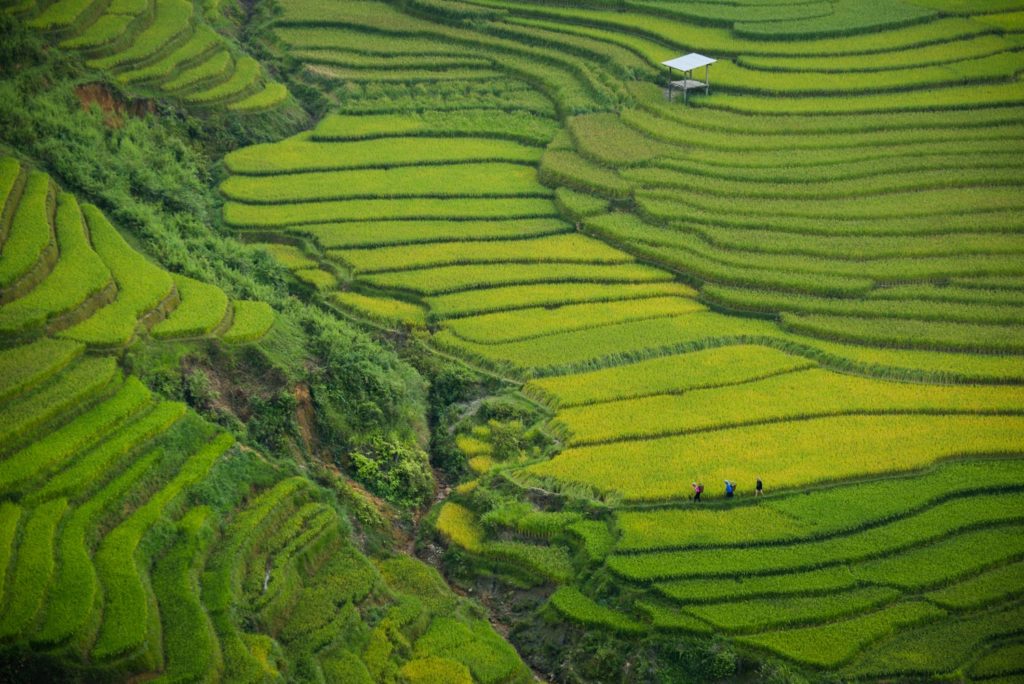
Must see in Vietnam
Vietnam is a country with a wealth of natural and cultural attractions, and there are many must-see destinations for visitors to the country. Here are some of the top must-see destinations in Vietnam, and an explanation of what makes them so special:
Ha Long Bay:
Ha Long Bay is a stunning natural wonder that is known for its towering limestone cliffs, emerald waters, and unique rock formations. Visitors can explore the bay on a cruise, and admire the beauty of the area’s many islands, caves, and beaches.
Hoi An:
Hoi An is a charming historic town that is known for its beautifully preserved architecture, rich cultural heritage, and colorful lanterns. Visitors can explore the town’s narrow streets, visit ancient temples and pagodas, and sample delicious local cuisine.
Hue:
Hue is a city that was once the imperial capital of Vietnam, and is home to a wealth of historic landmarks and cultural treasures. Visitors can explore the city’s ancient citadel, visit historic temples and pagodas, and enjoy the beauty of the Perfume River.
Sapa:
Sapa is a mountainous town located in the northwest of Vietnam, near the border with China. It is known for its stunning natural scenery, ethnic minority communities, and unique cultural heritage. Visitors can hike through the rice terraces and forested hills, and learn about the local culture and way of life.
Ho Chi Minh City:
Ho Chi Minh City, also known as Saigon, is the largest city in Vietnam and a bustling metropolis that is full of energy and excitement. Visitors can explore the city’s historic landmarks, visit museums and galleries, and enjoy the vibrant nightlife and delicious cuisine.
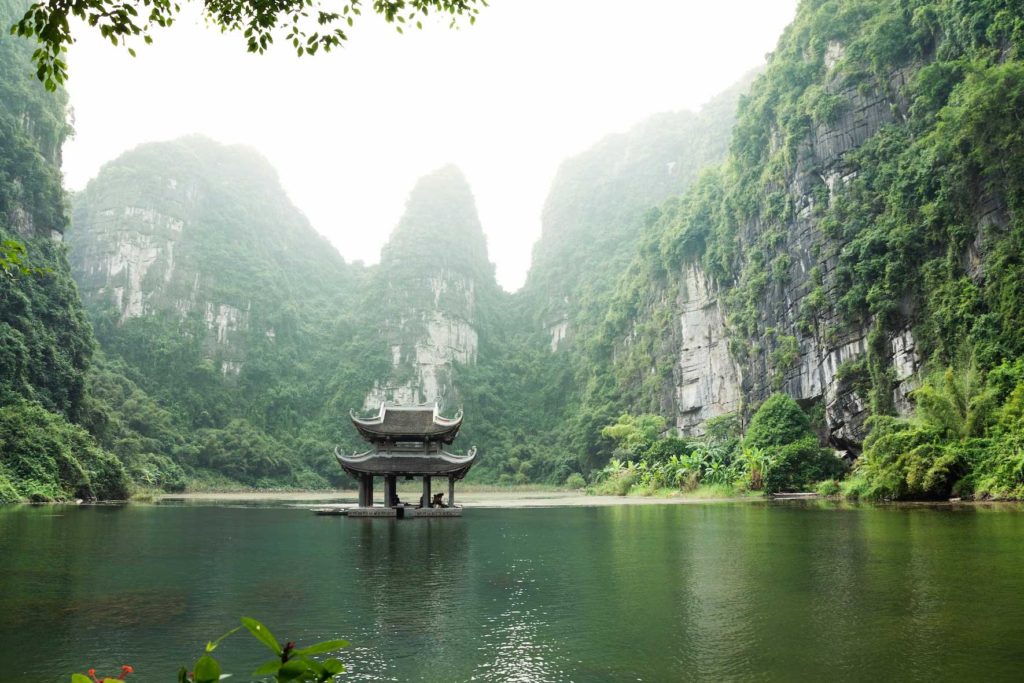
Must do experiences in Vietnam
From exploring ancient temples and pagodas to trying delicious local cuisine and enjoying stunning natural landscapes, here are some of the top must-do experiences in Vietnam:
Cruise Ha Long Bay:
Cruising through Ha Long Bay is a must-do experience for any visitor to Vietnam. The stunning natural wonder is known for its towering limestone cliffs, emerald waters, and unique rock formations, and a cruise is the best way to explore the area’s many islands, caves, and beaches.
Take a Street Food Tour:
Vietnam is known for its delicious street food, and taking a street food tour is a great way to sample a range of local specialties. Visitors can try banh mi (Vietnamese sandwich), pho (noodle soup), and a range of grilled meats and seafood, as well as fresh fruit and desserts.
Explore the Ancient City of Hoi An:
Hoi An is a charming historic town that is known for its beautifully preserved architecture, rich cultural heritage, and colorful lanterns. Visitors can explore the town’s narrow streets, visit ancient temples and pagodas, and learn about the town’s history and culture.
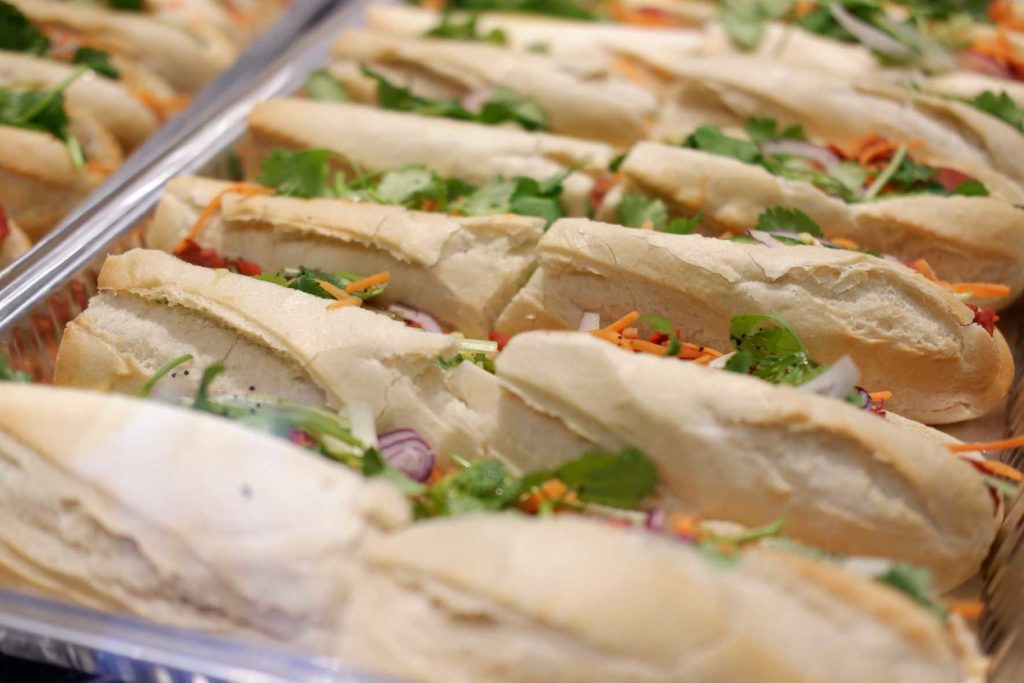
Trek in Sapa:
Sapa is a mountainous town located in the northwest of Vietnam, near the border with China. The town is known for its stunning natural scenery, ethnic minority communities, and unique cultural heritage, and trekking through the rice terraces and forested hills is a must-do experience.
Visit the Cu Chi Tunnels:
The Cu Chi Tunnels are an underground network of tunnels that were used by the Viet Cong during the Vietnam War. Visitors can explore the tunnels and learn about the history and tactics of the Vietnamese resistance fighters.
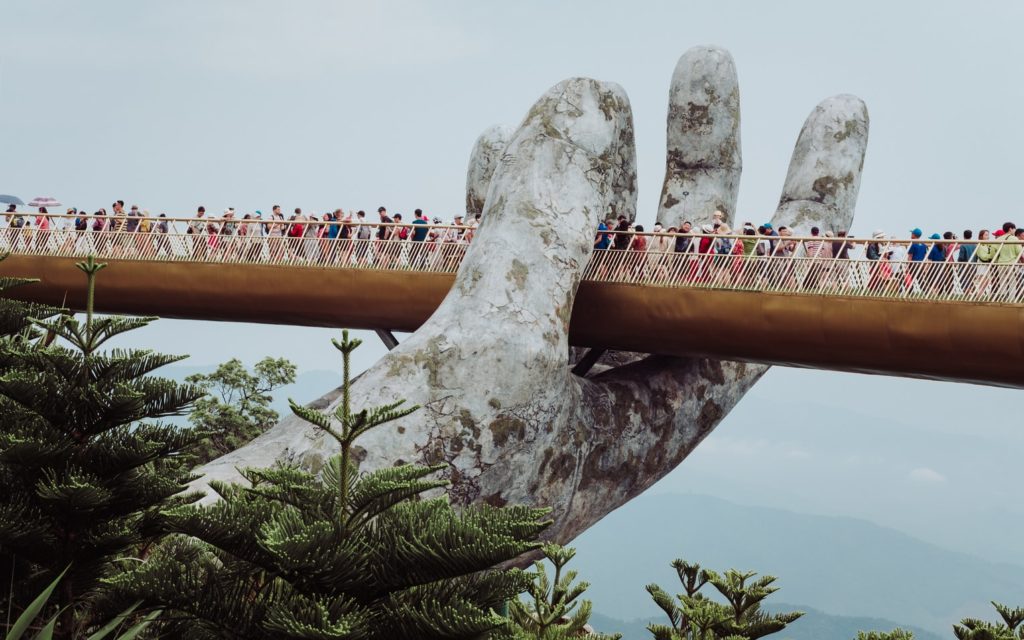
Iconic and luxurious hotels of Vietnam
Vietnam is home to a range of iconic and luxurious hotels, many of which are known for their stunning design, impeccable service, and world-class amenities. Here are some of the top iconic and luxurious hotels in Vietnam:
The Nam Hai in Hoi An:
The Nam Hai is a luxurious beachfront resort that is known for its stunning design, serene atmosphere, and world-class amenities. The resort features private villas, a spa, a fitness center, and a range of dining options, as well as beautiful gardens and a private beach.
The InterContinental in Da Nang:
The InterContinental in Da Nang is a luxurious hotel that is located on a secluded beach, and is known for its stunning design, world-class amenities, and exceptional service. The hotel features private villas, a spa, a fitness center, and a range of dining options, as well as stunning views of the coast.
The Park Hyatt in Saigon:
The Park Hyatt in Saigon is a luxurious hotel that is located in the heart of Ho Chi Minh City, and is known for its stunning French colonial architecture, exceptional service, and world-class amenities. The hotel features private rooms and suites, a spa, a fitness center, and a range of dining options, as well as beautiful gardens and a swimming pool.
The Sofitel Legend Metropole in Hanoi:
The Sofitel Legend Metropole in Hanoi is a historic hotel that is known for its stunning French colonial architecture, exceptional service, and world-class amenities. The hotel features private rooms and suites, a spa, a fitness center, and a range of dining options, as well as beautiful gardens and a swimming pool.
The Six Senses Ninh Van Bay in Nha Trang:
The Six Senses Ninh Van Bay is a luxurious resort that is located on a secluded beach in Nha Trang, and is known for its stunning design, exceptional service, and world-class amenities. The resort features private villas, a spa, a fitness center, and a range of dining options, as well as beautiful gardens and a private beach.

Food and drinks in Vietnam
Food specialities of Vietnam
Vietnam is known for its delicious and flavorful cuisine, which combines fresh and healthy ingredients with a range of herbs and spices. Here are some of the top food specialties of Vietnam:
Pho:
Pho is perhaps the most iconic Vietnamese dish, and is a flavorful noodle soup that is typically made with beef or chicken, rice noodles, and a variety of herbs and spices. It is often eaten for breakfast, and is a favorite dish among locals and visitors alike.
Banh Mi:
Banh Mi is a Vietnamese sandwich that is made with a crispy baguette, fresh vegetables, grilled meats or tofu, and a range of sauces and spices. It is a popular street food, and is often served as a quick and tasty lunch or snack.


Bun Cha:
Bun Cha is a traditional Vietnamese dish that is made with grilled pork meatballs, rice noodles, and a range of herbs and vegetables, all served with a flavorful dipping sauce. It is a popular lunch or dinner dish, and is often accompanied by a cold beer or a glass of iced tea.
Banh Xeo:
Banh Xeo is a savory Vietnamese pancake that is made with rice flour, turmeric, coconut milk, and a range of fillings, such as shrimp, pork, and bean sprouts. It is often served with a side of fresh herbs and lettuce leaves, and is wrapped and eaten with your hands.
Goi Cuon:
Goi Cuon, also known as fresh spring rolls, is a popular Vietnamese dish that is made with rice paper, fresh herbs and vegetables, and a range of fillings, such as shrimp, pork, or tofu. It is often served with a flavorful dipping sauce, and is a healthy and refreshing snack or appetizer.
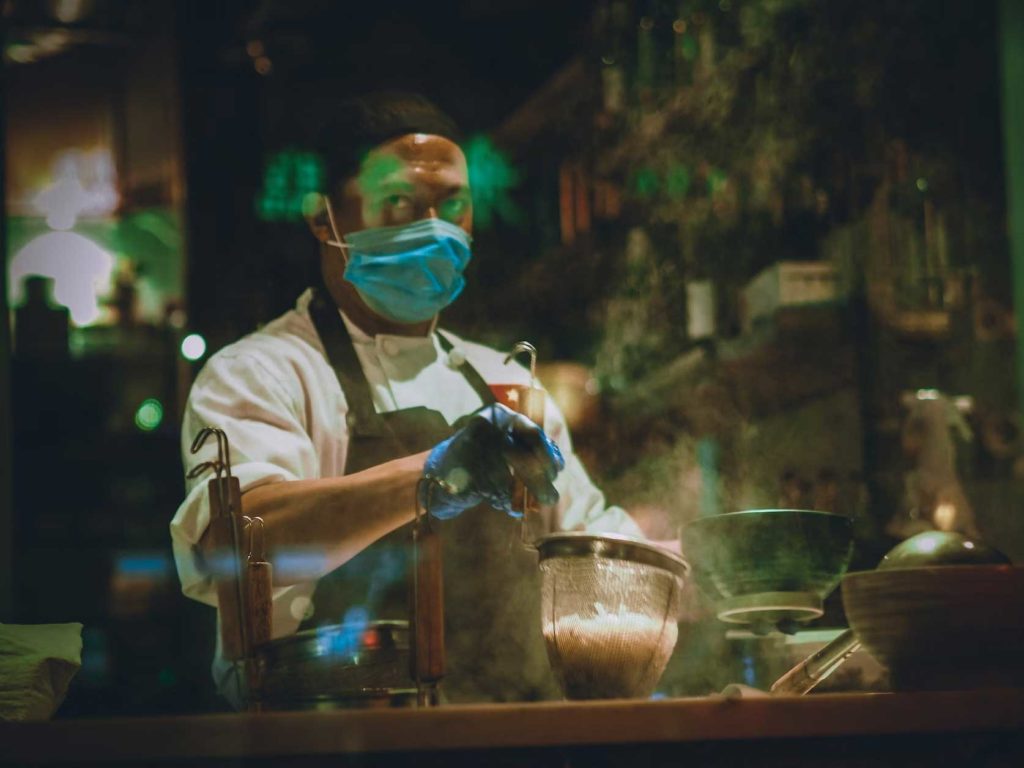
Top restaurants to try in Vietnam
The Daun Restaurant in Hanoi:
The Daun Restaurant is a fine dining establishment that offers a unique and innovative blend of traditional Vietnamese and contemporary cuisine. Chef Dennis Barton creates dishes using locally sourced ingredients, and highlights the diversity of Vietnamese cuisine through dishes such as the Daun Grilled Pork Belly and Vietnamese Iced Coffee Panna Cotta.
Cuc Gach Quan in Ho Chi Minh City:
Cuc Gach Quan is a restaurant that is known for its traditional Vietnamese cuisine, and its focus on organic and sustainable ingredients. Chef Trinh Diem Vy offers a range of classic dishes such as Pho, Bun Cha, and Banh Xeo, as well as vegetarian and gluten-free options.
The Mango Rooms in Hoi An:
The Mango Rooms is a restaurant that offers a fusion of Vietnamese, Caribbean, and Latin American cuisine. Chef Duc creates innovative dishes such as Mango Curry, Soft Shell Crab Tacos, and Chilli Caramel Pork, and also offers a range of vegetarian and gluten-free options.
Quan An Ngon in Hanoi:
Quan An Ngon is a restaurant that is known for its traditional Vietnamese street food, and offers a range of dishes from across the country. Chef Bao Tran creates dishes such as Bun Cha, Banh Mi, and Banh Xeo, and the restaurant is known for its bustling and lively atmosphere.
The Secret Garden Restaurant in Ho Chi Minh City:
The Secret Garden Restaurant is a rooftop garden restaurant that offers stunning views of the city and a range of Vietnamese and international cuisine. Chef Viet creates dishes such as Pho Bo, Grilled Pork Ribs, and Tom Yum Soup, and the restaurant is known for its relaxed and romantic atmosphere.
Temple Club in Ho Chi Minh City:
Temple Club is a restaurant that is located in a beautifully restored colonial building, and offers a range of traditional Vietnamese dishes. Chef Bui Thi Suong creates dishes such as Hanoi Fried Fish, Caramelized Pork in Clay Pot, and Soft Shell Crab, and the restaurant is known for its elegant and sophisticated atmosphere.
The Red Bean Restaurant in Hanoi:
The Red Bean Restaurant is a fine dining establishment that offers a range of traditional Vietnamese and international cuisine. Chef Hoang creates dishes such as Hanoi Pho, Caramelized Pork Belly, and Lemongrass Chicken, and the restaurant is known for its beautiful and serene atmosphere.
The Deck Saigon in Ho Chi Minh City:
The Deck Saigon is a restaurant that is located on the banks of the Saigon River, and offers a range of international and Vietnamese cuisine. Chef Ben creates dishes such as Grilled Prawns, Beef Tenderloin, and Banh Xeo, and the restaurant is known for its beautiful river views and relaxed atmosphere.
The Fisherman’s House in Hoi An:
The Fisherman’s House is a restaurant that is located on the beach in Hoi An, and offers a range of fresh seafood dishes. Chef Minh creates dishes such as Grilled Lobster, Hoi An Seafood Salad, and Fresh Crab, and the restaurant is known for its stunning beach views and laid-back atmosphere.
Madame Hien in Hanoi:
Madame Hien is a restaurant that is known for its traditional Vietnamese cuisine, and offers a range of classic dishes. Chef Didier Corlou creates dishes such as Bo La Lot, Bun Cha, and Cha Ca, and the restaurant is known for its beautiful colonial building and elegant atmosphere.

Shopping, taxes and tipping in Vietnam
In Vietnam, the government imposes a Value Added Tax (VAT) on goods and services. The standard rate is currently 10%, with some items such as food and medicine being taxed at a reduced rate of 5%. This tax is generally included in the advertised price of goods and services, so visitors do not need to calculate it separately.
In addition to the VAT, some restaurants and cafes may charge a service charge, which is usually around 5-10% of the total bill. This is not mandatory, and customers can choose whether or not to pay it. However, if a service charge is added to the bill, it is customary to tip an additional amount to the waiter or waitress. The amount of the tip can vary depending on the quality of the service, but is typically around 5-10% of the total bill.
When shopping in markets or small shops, it is generally expected that customers will haggle over the price of goods. While fixed-price shops and supermarkets may have set prices, in markets and smaller shops, bargaining is a common practice. Visitors should start by offering a price that is lower than the advertised price, and negotiate with the seller until they reach a mutually acceptable price.

What not to do in Vietnam, things to avoid
Vietnam is a beautiful and welcoming country with a rich culture and history, but like any other country, there are certain things that visitors should avoid in order to have a safe and enjoyable trip. Here are some things to keep in mind when traveling to Vietnam:
Disrespecting Vietnamese culture and customs:
Vietnamese culture is deeply rooted in tradition and respect, and visitors should be mindful of this when traveling to the country. It is important to dress modestly, especially when visiting religious or cultural sites, and to be respectful of local customs and traditions.
Breaking traffic laws:
Vietnam has a reputation for chaotic traffic, and visitors should be cautious when crossing the road or driving. It is important to follow traffic rules and regulations, such as wearing a helmet when riding a motorbike or scooter, and avoiding drinking and driving.
Overstaying your visa:
Visitors to Vietnam should be aware of the length of their visa and ensure that they do not overstay their permitted time. Overstaying your visa can result in fines or deportation, and can make it difficult to enter the country again in the future.
Being careless with your belongings:
Vietnam is generally a safe country, but visitors should still be mindful of their belongings, especially in crowded areas. It is important to keep valuables such as phones, cameras, and wallets secure, and to avoid carrying large amounts of cash.
Disrespecting the local wildlife:
Vietnam is home to a range of unique and beautiful wildlife, but visitors should be respectful of these creatures and avoid harming or disturbing them. This includes not purchasing items made from endangered species, and avoiding activities such as elephant riding or tiger petting, which can harm or exploit the animals.
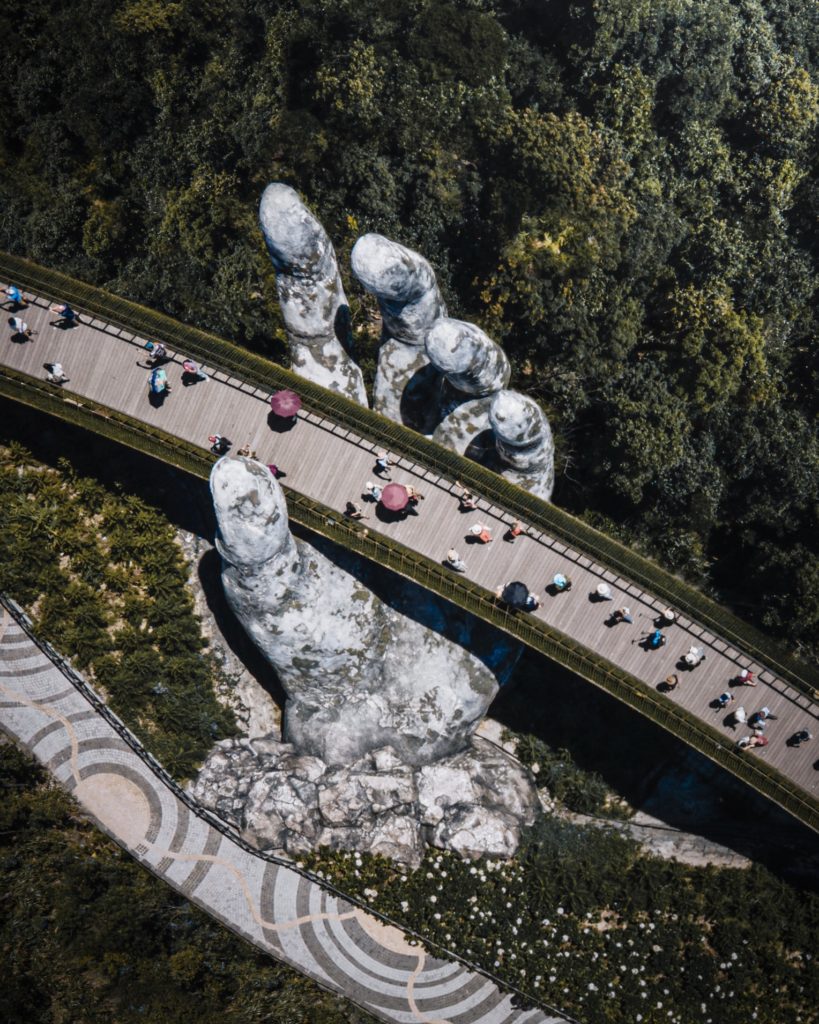
Safety and security in Vietnam
Vietnam is generally a safe country for visitors, with a low crime rate and friendly locals. However, like any other country, there are certain safety and security issues that visitors should be aware of. Here are some tips to ensure a safe and enjoyable trip to Vietnam:
Scams and fraud:
Scams and fraud are not uncommon in Vietnam, especially in tourist areas. Visitors should be cautious of scams such as inflated prices or counterfeit goods, and avoid giving money or personal information to strangers.
Traffic safety:
Vietnam has a reputation for chaotic traffic, and visitors should exercise caution when crossing the road or driving. It is important to follow traffic rules and regulations, such as wearing a helmet when riding a motorbike or scooter, and avoiding drinking and driving.
Natural disasters:
Vietnam is prone to natural disasters such as typhoons, floods, and earthquakes. Visitors should be aware of the weather conditions and any potential risks, and follow local authorities’ instructions in case of an emergency.
Petty crime:
Petty crime such as pickpocketing and theft can occur in tourist areas, especially at night. Visitors should keep their belongings secure and avoid carrying large amounts of cash.
Political protests and demonstrations:
Political protests and demonstrations can occur in Vietnam, and visitors should avoid participating in these events or expressing political opinions in public.
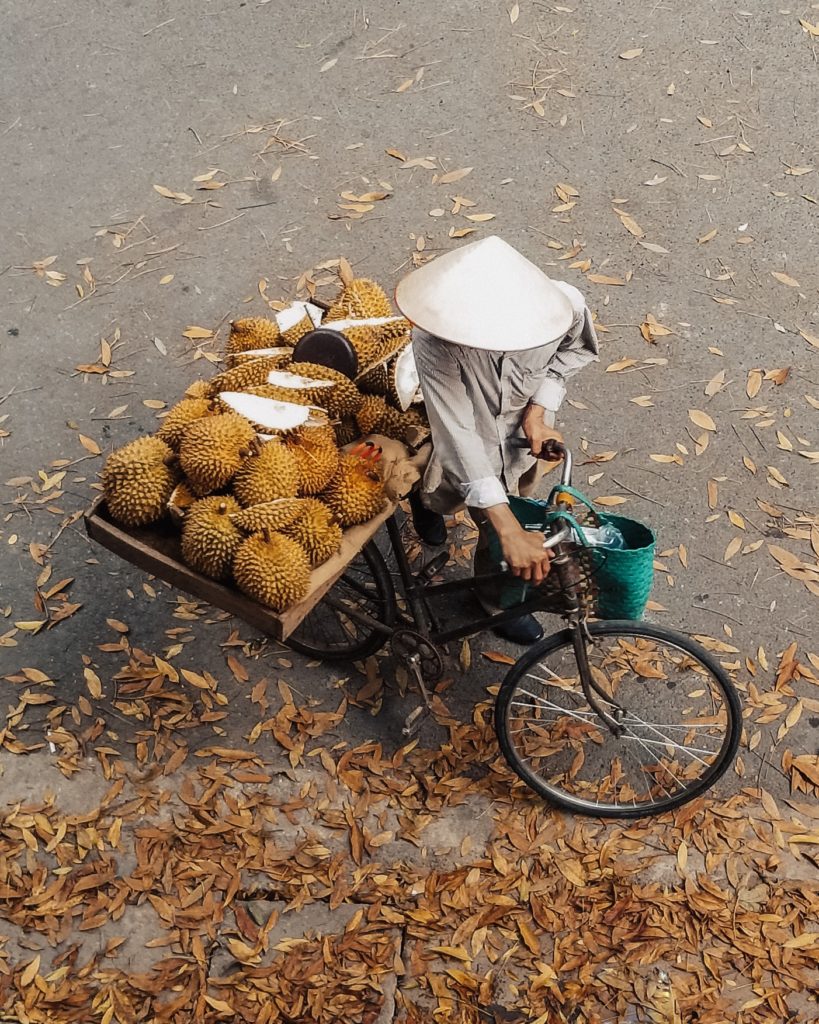

Final advice for travellers
Electricity and charging:
The electricity voltage in Vietnam is 220V, and the standard plug types are Type A and Type C. Visitors should bring a universal adapter if their electronics use a different type of plug. It is also important to note that power outages can occur in some areas, particularly during the rainy season, so visitors should bring a portable charger or power bank.
Cash and credit cards:
Cash is the preferred method of payment in Vietnam, particularly for smaller purchases and at markets and street vendors. Visitors should carry a mix of dong (VND) notes and coins, as smaller vendors may not have change for larger notes. While credit cards are becoming more widely accepted in larger cities and tourist areas, visitors should still carry cash as a backup.
Communication:
English is spoken in many tourist areas, but it is still helpful to learn a few basic phrases in Vietnamese, particularly in more rural or non-touristy areas. Visitors can also download translation apps or carry a phrasebook.
Transportation:
Transportation options in Vietnam include taxis, motorbikes, and buses. Visitors should exercise caution when using motorbikes or scooters, as traffic can be chaotic. Taxis should be booked through reputable companies, and visitors should confirm the fare before getting in. Buses are a cheap and convenient way to travel between cities, but visitors should be prepared for long travel times and potentially crowded conditions.
Health and safety:
Visitors should be up-to-date on routine vaccinations and consider getting vaccinated for Hepatitis A and B. Mosquito-borne illnesses such as dengue fever and malaria are present in some areas, particularly during the rainy season, so visitors should use insect repellent and wear long-sleeved clothing. Visitors should also be cautious when eating street food, and only consume food that is cooked and served hot.
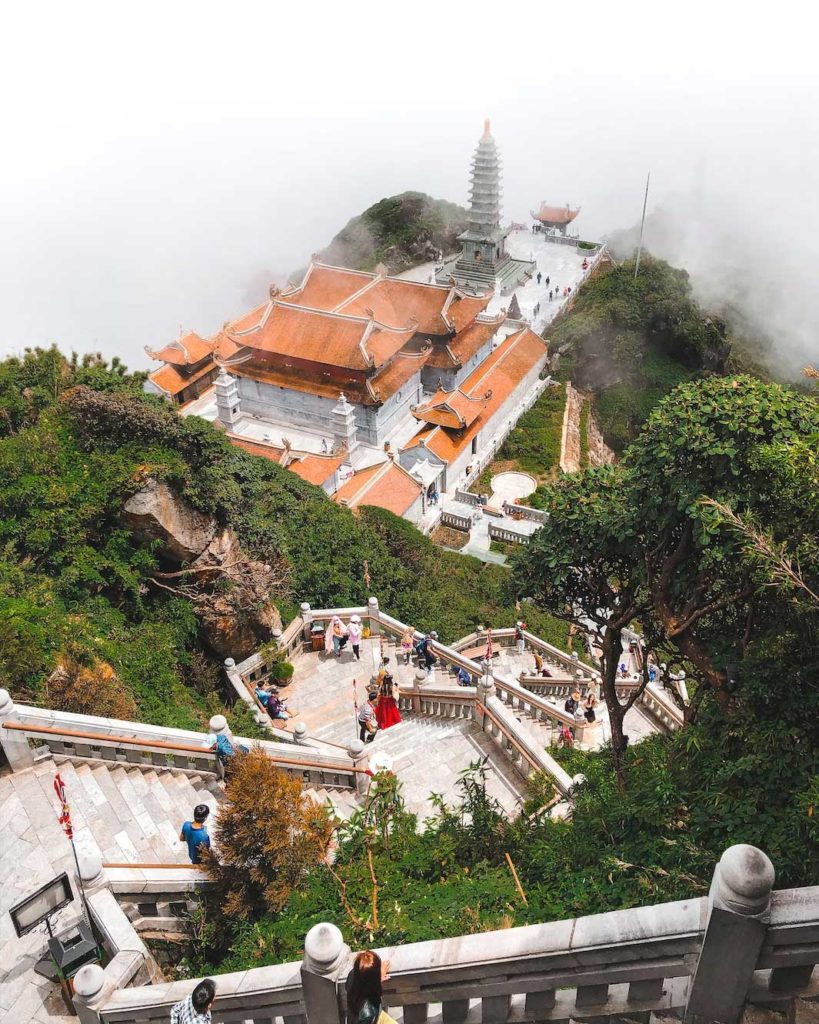
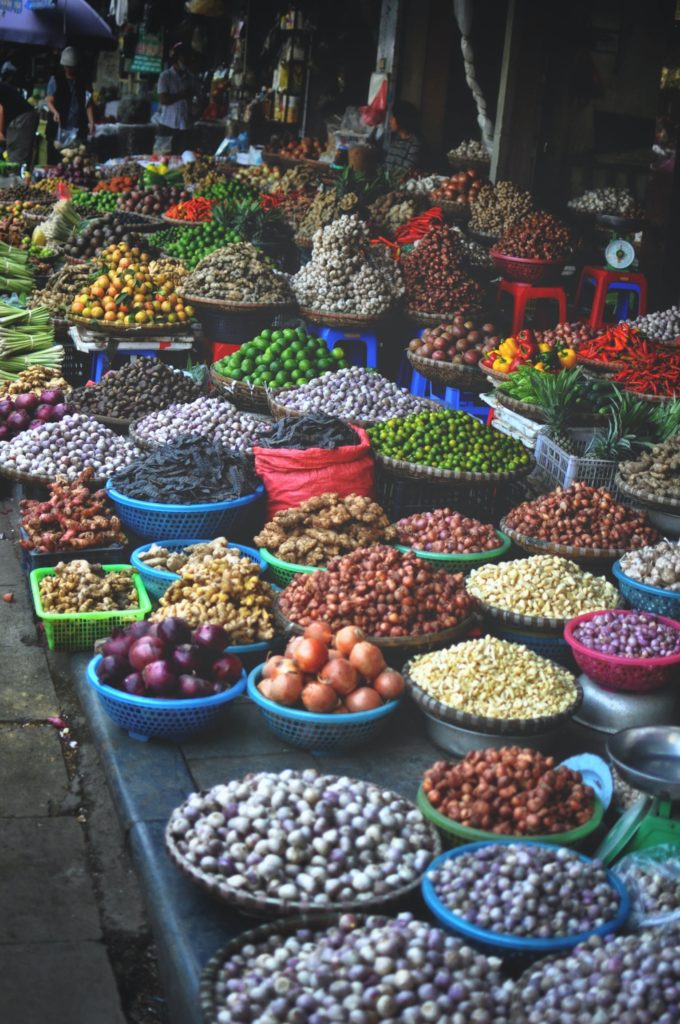
–
Check out our Travel Guides.